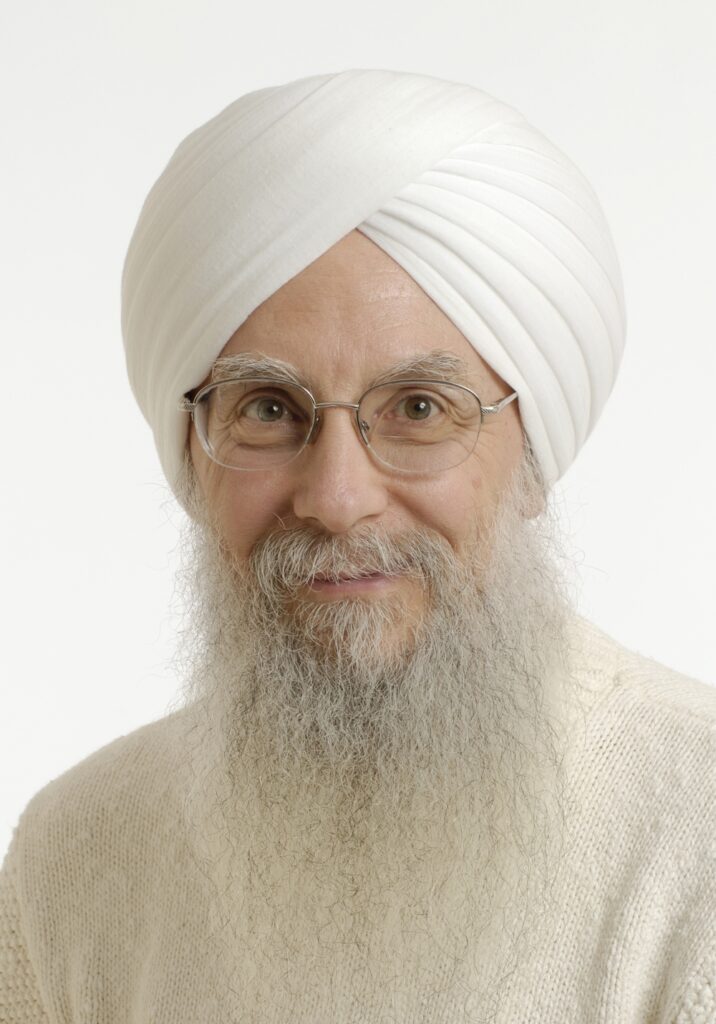No products in the cart.
The Evidence for Yoga Improvement in Sleep Quality
by Sat Bir Singh Khalsa, Ph.D.

The importance of getting both sufficient and a higher quality of sleep has been slowly growing in the public consciousness over the past few decades. This is with good reason and due in no small part to sleep scientists and clinicians promoting this actively. Research on sleep has revealed its importance in a wide variety of human functioning including cognitive and academic performance, emotion and stress regulation, cardiovascular function, endocrine function, metabolism, glucose regulation, immune function, and even in appetite and weight regulation. With surveys showing that fully a third of the population is choosing to sleep less than 6.5 hours per night on average, encouraging the public to respect their body’s need for close to 8 hours of sleep is important in order to address the epidemic of non-communicable disease (e.g. obesity, diabetes, cardiovascular disease, etc.) for which insufficient sleep is now a known risk factor.
A significant issue that interferes with the ability to get quality sleep is the high prevalence of chronic stress and mood disturbance in modern society. Perceived stress and anxiety increase psychophysiological arousal, which manifests as a heightening of the “fight or flight” response in the body through elevation of the stress hormones adrenaline and cortisol, and increased activity of sympathetic nerve affecting organs and tissues throughout the body. It also manifests psychologically to keep you alert, keyed up, and on edge, which will interfere with good sleep quality. Everyone has experienced how sleep is lighter, more difficult, and easily disturbed under stressful life circumstances such as the night before a major life event such an exam, court case, or major move. Sleep is a passive process that relies upon our ability to quiet down, relax, and deactivate. When we put ourselves in the proper state for sleep, then sleep happens. In fact, trying to fall asleep quickly is a good prescription for creating difficulty falling asleep because it generates a performance anxiety.
Given this relationship with psychophysiological arousal and sleep, it makes sense that behavioral practices such as mind-body techniques that reduce such activation will be conducive for sleep quality. Practices such as yoga, tai chi, and qi gong that combine multiple mind body practices (physical exercise/movement, breathing, relaxation, meditation) are therefore likely to help with sleep quality. Evidence supporting this comes from survey studies of yoga practitioners. A study conducted in Spain and published in 2009 compared a group of long-term yoga practitioners with a matched control group of non-yoga practitioners on a standardized sleep quality self-report questionnaire, the Pittsburgh Sleep Quality Index (PSQI). As expected, the control group had an average score of 4.25, which is below the PSQI cutoff score of 5 demarking “good sleepers” (lower scores indicate better sleep). The yoga practitioners scored 2.92, which was statistically significantly better than the non-yoga practitioners. Similarly, a study conducted in India on long-term elderly yoga practitioners showed a yoga group PSQI score of 3.77 compared with a significantly higher control group score of 8.00 (the high score in the control group is consistent with the well-known geriatric degradation of sleep quality). However, the weakness with so-called “cross-sectional” survey research studies is that the participants have self-selected yoga practices. This issue is associated with the potentially fatal experimental flaw that makes conclusions of causality attributing the yoga practice as the active agent. For example, it is possible that people who choose to practice yoga are also more health conscious, exercise more, and are in a higher socio-economic status any of these factors alone could by themselves be responsible for improved sleep in the yoga practitioners.
Other studies of sleep in long-term yoga practitioners have gone further with quantifying these findings and provide some additional confidence in the positive effects of yoga for sleep. Dr. Alyson Ross, a yoga researcher at the National Institutes of Health, conducted a study published in 2012 of over 1,000 yoga practitioners that had a widely varying history of duration (i.e. years of practice) and frequency of practice (yoga class attendance and home practice). The analysis showed that practice frequency (largely driven by home practice) was significantly correlated with a reduction in self-reported sleep disturbance; for every additional day per week of yoga practice, there was a quantifiable improvement in sleep. Furthermore, there was also a significant correlation of higher sleep quality with the practice of more vigorous yoga poses. Further analysis of data from this study published in 2013 evaluated yoga practitioners’ attribution of benefit of yoga practices. This study reported that 68.5% of long-term practitioners “agreed” or “strongly agreed” with the statement “My sleep is better because of yoga.” (26.7% neither agreed or disagreed and only 4.8% disagreed or strongly disagreed with this contention). These results showing correlations with practice, and attributions of causality, are somewhat stronger than simple cross-sectional studies.
However, the strongest studies are “prospective” research trials in which yoga practices are initiated by non-practitioners and before and after measures are acquired. A few such prospective studies have evaluated sleep quality changes in largely healthy normative populations following a yoga practice intervention. A randomized controlled trial (RCT) of 69 elderly home residents in India showed that the yoga group, after 6 months of practice, exhibited a significant reduction in the time taken to fall asleep, an increase in the total sleep time in hours, and an improvement in the feeling of being rested in the morning after sleep as compared with controls that did not practice yoga. A more recent but very similar RCT by researchers at the National Institute of Mental Health and Neuroscience, in the same kind of population in India, found statistically significant improvements in sleep quality on the PSQI as compared with no-treatment control subjects. A Chinese RCT of nurses (another population prone to sleep disturbance) revealed that a 6-month yoga intervention yielded statistically significant improvements in sleep quality. Finally, a 2019 publication of an RCT by a Swedish research team evaluated the effects of a 6-week yoga intervention in young adult students. Although the yoga group did not show statistically significant improvements in sleep compared with the control group, after analysis of levels/amount of yoga practice, those participants that practiced yoga more frequently and intensively (i.e. a higher dose of yoga) showed a statistically significant correlation between dose and sleep quality improvement.
These data all suggest that yoga practices can improve sleep quality in the general population. In fact, improvement in sleep quality and depth is often reported by individuals who have recently begun a yoga practice. For example, in qualitative research we conducted on yoga interventions in public school settings, sleep was often reported as a characteristic that was improved. Sample student interview quotes from these studies include: “Yoga definitely helped with sleeping … it would take me a long time to get to sleep. When I was doing yoga it was much easier to fall asleep and stay asleep.”; “…I also do the three-part breathing so that I can relax myself before I try and fall asleep.”; and “Yea, I can sleep a lot better, fall asleep faster.” Larger more extensive trials are warranted to further advance our confidence in these findings.
There is a growing body of research suggesting that yoga may improve sleep in the clinically significant condition of chronic primary insomnia, which involves a substantial impairment in sleep characteristics over a prolonged time period. But that is another story.

Sat Bir Singh Khalsa, Ph.D. is the KRI Director of Research, Research Director for the Kripalu Center for Yoga & Health, and Assistant Professor of Medicine at Harvard Medical School. He has practiced a Kundalini Yoga lifestyle since 1973 and is a KRI certified Kundalini Yoga instructor. He has conducted research on yoga for insomnia, stress, anxiety disorders, and yoga in public schools, he is editor in chief of the International Journal of Yoga Therapy and The Principles and Practice of Yoga in Health Care and author of the Harvard Medical School ebook Your Brain on Yoga.
Teacher
KRI is a non-profit organization that holds the teachings of Yogi Bhajan and provides accessible and relevant resources to teachers and students of Kundalini Yoga.


 Français
Français Deutsch
Deutsch Italiano
Italiano Português
Português Español
Español 简体中文
简体中文
More Related Blogs